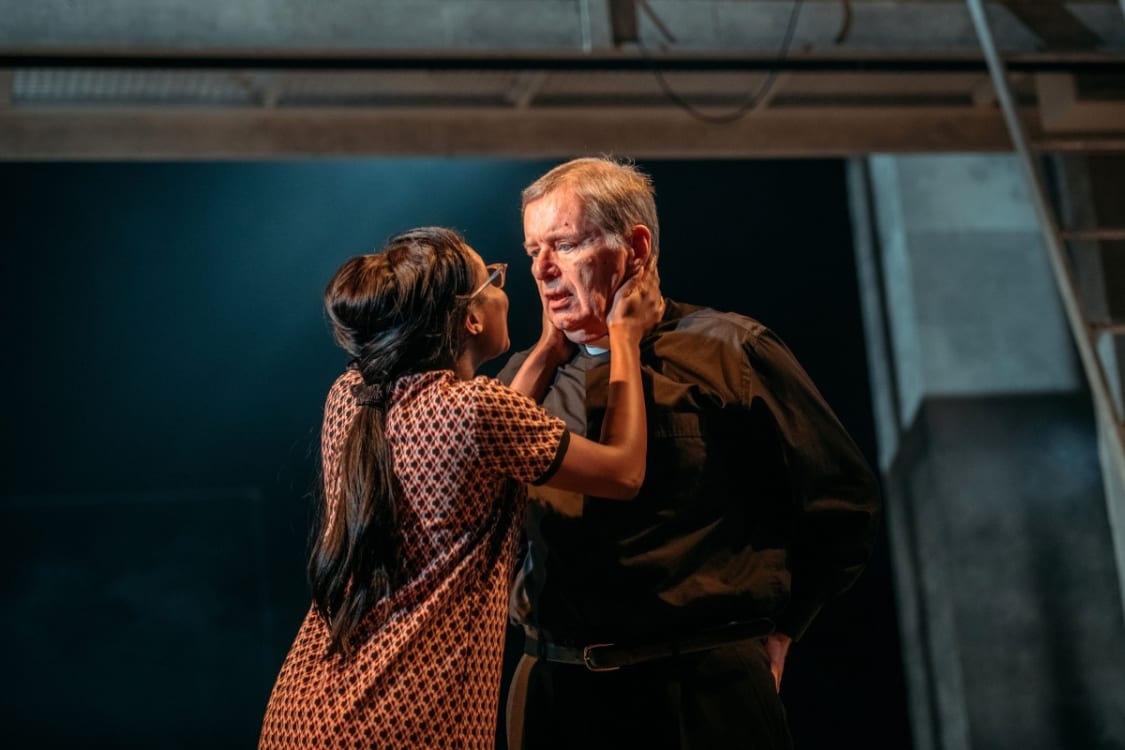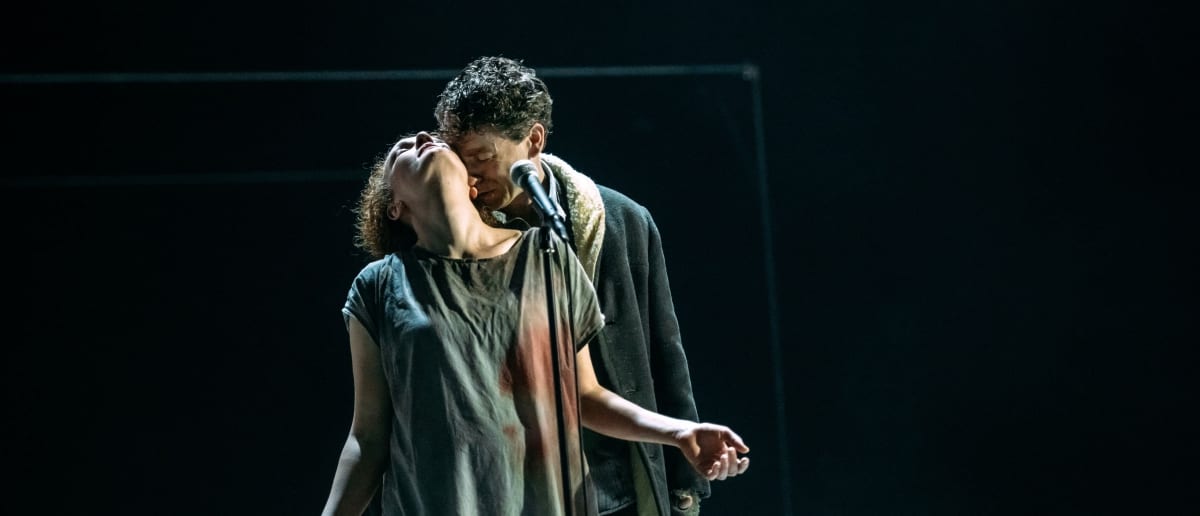The Duchess (of Malfi) is writer/director Zinnie Harris’ modern take on John Webster’s bloody Jacobean revenge tragedy. It tells of titular Duchess Giovanna, who is a wealthy and wilful widow in what is unfortunately a man’s world. Her re-marriage, and the objections of her controlling and abusive brothers, drive a murderous plot with an impressively high body count.
Unfortunately, the modernity of this adaptation feels as clumsily shoe-horned in as the brackets in the title. The script veers between seventeenth-century elocution and modernist staccato delivery, resulting in something with neither the power and drama of the original nor the rapid-fire brevity of a more modern piece.
This possibly explains the frequent stumbling of the actors over their lines, and their tendency to miss their cues; the chopping and changing of styles means there is no comfortable rhythm throughout. By retaining some of the seventeenth-century verboseness of the original, the first half drags as the inevitable conclusion is painstakingly set up, without ever fully drawing the audience in.

In the second half, the pace does pick up as revenge is bloodily enacted on the abusive and controlling men. However, this swiftly takes on an air of farce, and it is unclear whether this is intentional or not. If the farce is intentional, it is not obvious to what end.
Although laudable, the deconstruction of the toxic masculinity as embodied by Angus Miller’s incestuously inclined Ferdinand and George Costigan’s predatory Cardinal has on old-fashioned air in the post-Me Too, post-Harvey Weinstein age. Ferdinand is a caricature throughout, while the Cardinal’s bad behaviour is largely signalled by his use of crude language. There are too few scenes of him actually abusing his power, and too many of him trying to shock through rather tame swearing.
Indeed, profanity is used throughout the play, but rarely provokes any response beyond a sigh. A well-placed swear word can be rib-crackingly funny or abruptly shocking, but here is used too frequently and too clumsily to be either.
Much the same can be said of the torture scene that begins Act 2. Initially the aural assault and blinding light is effectively startling and disorientating. By the tenth or fifteenth repetition, it is merely tedious and headache-inducing. This is an issue with the production as a whole – too much of it is too loud and over-wrought.

There is one scene of breath-taking beauty and quality. It comes as musician Eleanor Kane leads an ablution-cum-ascension following the deaths of several characters. Against an apparently endless black background, she gently washes and raises the dead, all the while singing a haunting refrain.
It is moving and uplifting all at once, sorrowful and simultaneously a tender release from pain and suffering. As a moment of rare stillness and subtlety within a production that too often relies on shouting and banging, it brings a lump to the throat and a tear to the eye.
Regrettably, this truly brilliant scene is not enough to rescue The Duchess (of Malfi). It is a brave endeavour and undeniably well-intentioned, but the execution is not sharp enough to carry it off. To succeed, this production either needed to be much closer to the original, or much further away.

